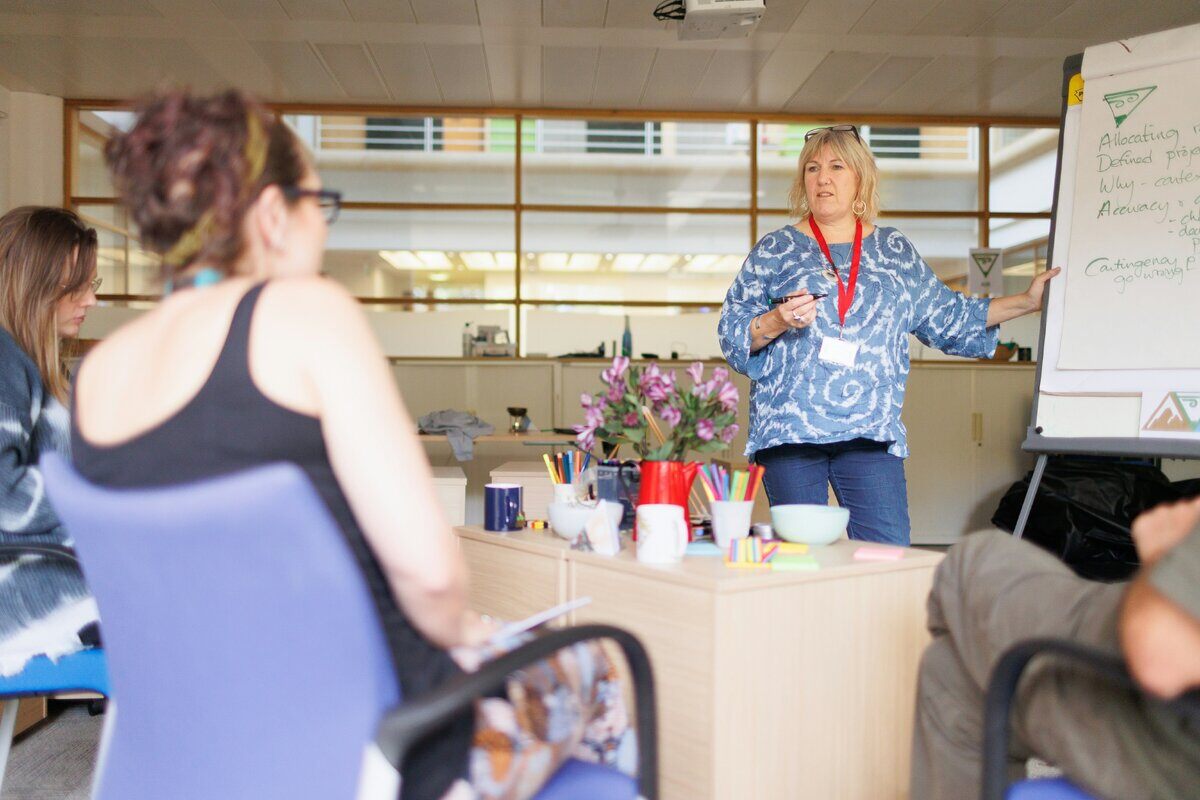
Traditional Webinars vs. Modern Webinars: The Evolution Of Online Learning
The Rise of the Webinar
Telecommunications and information technology have never been as widespread, robust, or powerful as they are today.
With a strong enough internet connection, you can talk to someone on the other side of the world with next to no perceptible lag and enjoy both face and voice transmission.
Thirty years ago, that was thought to be impossible by most people.
Needless to say, this has made all kinds of things possible, things that have made us smarter, more connected, and of course, more entertained.
Today, for myriad reasons, the webinar has risen to the peak of telecommunications for group learning, lecturing, collaboration, and so much more.
A Brief History Of Webinars
It could be said that the idea started with TV bridges, a network that connected television studios from various nations across the globe to create a live, semi-interactive communications platform.
The delay was less than a second or two, and while it lasted, it was very popular.
It wasn't until 1999 that IP telephony with real-time video transmission became a reality.
When that hit the market, some might say all of the advances we enjoy today became inevitable.
Starting in the early ‘90s, video calls and video conferences got their rudimentary start.
Back then, it was pretty limited.
The definition was poor and connectivity was spotty.
But, we were well on our way.
Webinars only became real in a meaningful sense around the year 2000, when video calls and tech support were both robust enough to support the technology at a sustainable and usable level.
From this developed the working meeting, the training seminar, and video conferencing finally became practical for business purposes.
The next big step forward after that was the end of Macromedia Flash8, a software-based image rendering system that got its start in 1996.
It was a big switch, and a lot of people had to ditch or upgrade old equipment.
This led to the rise of Adobe Flash Player, and eventually to mobile internet and HTML5.
Webinars And The Pandemic
In the year 2020, it was thought that the webinar format was dead.
Thought leaders on the subject unanimously believed that the time of the webinar was over.
Forbes wrote authoritative articles explaining in detail why we should give it up and return to in-person events.
What they didn't realize is that the COVID-19 pandemic would drive most of us into our homes, out of office spaces, and away from the public square faster and more fully than anyone could have imagined.
Suddenly, this technology became viable once again as people grew eager to interact and businesses needed a way to breathe life into their collaborative efforts.
Webinars became entrenched as the leading way to do these things and more.
Now, these channels are so well-developed and people are so accustomed to using them, that there is no going back.
Indeed, we aren't doing away with our new/old best friend, the webinar, anytime soon.
Rather, we are looking for ways to make them more powerful, robust, feature-rich, and enjoyable.
What's more, these innovative efforts have been wildly successful.
E-Learning: The Evolution Of The Learning Experience
Anyone with an interest in sharing or consuming information, or e-learning, has had an interest in the promise of the internet since at least the early ‘90s.
That includes educators and institutions of higher learning.
More and more, it would and does include business owners, corporations, and productivity management teams looking to imbue their workforces with new skills.
For this, information technology and telecommunications are a clear fit.
However, in the early 2000s, the idea of online learning was regarded as fanciful and as a last-minute resort for inclement weather at best.
With the economic recession of 2008, enough working-age people were displaced from their professions that the demand for online learning was overwhelming.
Duke University was one of the first to meet this demand with its largely free online educational platform known as Coursera.
They proved that not only could full, complete courses be transmitted online, but that it could be high-quality, and even interactive.
Since then, online learning has exploded.
Today, the infusion of webinar tech and formats into e-learning efforts is only enhancing these activities further.
Webinars For Learning & Development
Once you understand how webinars are enhancing online education, it becomes clear why they would be good for all manner of group communications.
The webinar format can be as interactive as public events.
In reality, it can be even more interactive because individuals can be heard easily without the need to shout over a crowd or across an auditorium.
All manner of other digital assets can be leveraged for more visual, audio, and interactive benefits.
With the right webinar structure, these events can serve the needs of many different learning types, often simultaneously.
Traditional vs. Modern Webinars
In the early 2000s, webinars were the cool new thing, the latest fad in business, advertising, education, or whatever type of messaging you were doing.
Compared to what we are capable of today, they were pretty simple.
Traditional Webinars
The original webinar was a relatively basic package, not that you couldn't get a lot done with it.
There was voice and video, of course.
It also gave you a lot of control over the moderation side of the conversation.
This made it possible for the person at the wheel to control who had the "mic” at any given time.
As mentioned above, we were ready to do away with the webinar format altogether in the year 2020.
Thought leaders felt that it had become trite and that to have an emotional effect on an audience, we needed to go back to the in-person meeting.
That would have been great, of course, but the limitations of time, space, and availability would be back and in full effect.
Because of the global health scare of 2020-2023, all of that changed, and the webinar became hot again.
It isn't that it ever stopped being good.
It was a shift in the culture that got us excited about the format again.
And, of course, the technology has gotten better, and people are no longer eager to throw it out.
Share Knowledge & Information
In the early days of webinars, all people expected, and all they got, was simple information sharing.
There were some basic formatting controls.
For example, you could mute the audience, or individual audience members so that the conversation wouldn't become a free-for-all.
The basic idea was simply an expansion of a basic video call.
It was great for sharing knowledge or information, giving lectures, holding business meetings, and sharing marketing messaging.
But, it didn't go far beyond that, and we didn't ask it to.
It was great for what it was, and we didn't expect much more until we started growing tired of the basic format around 2019.
Modern Webinars
Because of our communication needs over the last three years and persistent technological progress, today's webinar products are far and away more advanced than we had, even in 2020.
Today, there are more features, more stability, and better quality sound and visuals.
There are more ways to incorporate slides, graphics, interactive features, and more.
Perhaps the most important thing is that live multimedia production is much more robust for a more slick and finished-looking experience.
Hosts can make a presentation look much more professional than they could even four years ago.
It's much easier for audiences to interact with hosts and speakers using their own mobile devices.
There's polling, muting and unmuting, camera switching, slick image overlays, and so much more.
What's more, the many options for a modern webinar structure template ensure that the hosts can curate a quality presentation that suits their needs.
All of this makes it easier to serve visual and auditory learners at the same time, as well as to give the audience a sense of confidence through slick and professional presentation design.
Let's take a closer look at some of the ways modern webinars have advanced.
Personalized
Audience members can get a much more customized experience with today's offerings.
They can even wield some control over the format, content, and nature of the event itself if the hosts build that into the original package.
Of course, with instant, virtual polling, interactive features, and others that facilitate open communication, today's webinar audience is much more likely to feel listened to and get the experience they prefer.
Convenient
As always, audiences can watch or participate from any internet-connected location.
Today's mobile technology has made this not only easy for audiences but enjoyable, as well.
It is quite common for audience members, and even speakers, to attend through a mobile phone and for the production quality of the event not to suffer at all.
Competitive
For its first two decades, webinar technology was pretty basic.
Most webinars looked pretty much the same, and the available features were more or less uniform.
Today, the most competitive platforms and service providers offer capabilities and features that make presentations more compelling, making webinars more interesting to audiences.
Of course, webinar producers also have a lot more control over the quality of their presentations.
This makes the more dedicated webinar host more likely to succeed.
Connected
Internet connections are much more robust these days.
This means fewer disconnections and less frequent technical problems.
It also means that audiences and webinar hosts have more options and more ability to communicate before, during, and after the presentation.
These days, it is fairly standard that audiences have a say in the information they consume, when they watch it, how they interact with it, and more.
After the event is complete, audiences are often invited to comment, offer suggestions, and even carry on the discussion online.
The overarching effect all of this has is greater audience satisfaction.
That means more engagement for you and your cause.
Learner-Driven
For all the reasons mentioned above, when you format a webinar for education, your learners can choose options that suit their learning style.
Often they can do this on the fly using interactive options.
More meaningfully, learners of different types can offer input before a presentation so that the presenters know they have X amount of visual learners, Y amount of audio learners, and so on.
How To Structure A Webinar For Today’s Learner
Today's learner wants meaningful information quickly.
This is not to say they have short attention spans, but they have little tolerance for dead air.
Looking at our previous guides on how to construct a quality webinar in today's climate, be sure your presentation is interactive, lively, and information-dense.
The most important thing to remember is to match your format to your audience.
- Choose a topic
- Choose a speaker format
- Gather your team: Organizer, Presenter/s, Moderators, Assistants
- Write/Create content
- Choose a webinar platform
- Select a date and time
- Advertise the event
- Rehearse
Conclusion
We can see that webinars have come a long way over nearly a quarter of a century.
Today, they are more powerful and more popular than ever.
With the right service and customer support, you can build a webinar package that will meet your needs, educate, and entertain your audiences.
Sources
- https://www.forbes.com/sites/williamarruda/2021/12/29/the-history-of-the-webinar-and-why-the-webinar-should-be-history/?sh=41f5863459fb
- https://collaborator.biz/en/blog/webinar-history/
- https://online.sbu.edu/news/sports-journalism
- https://www.indeed.com/career-advice/career-development/how-to-create-webinars






